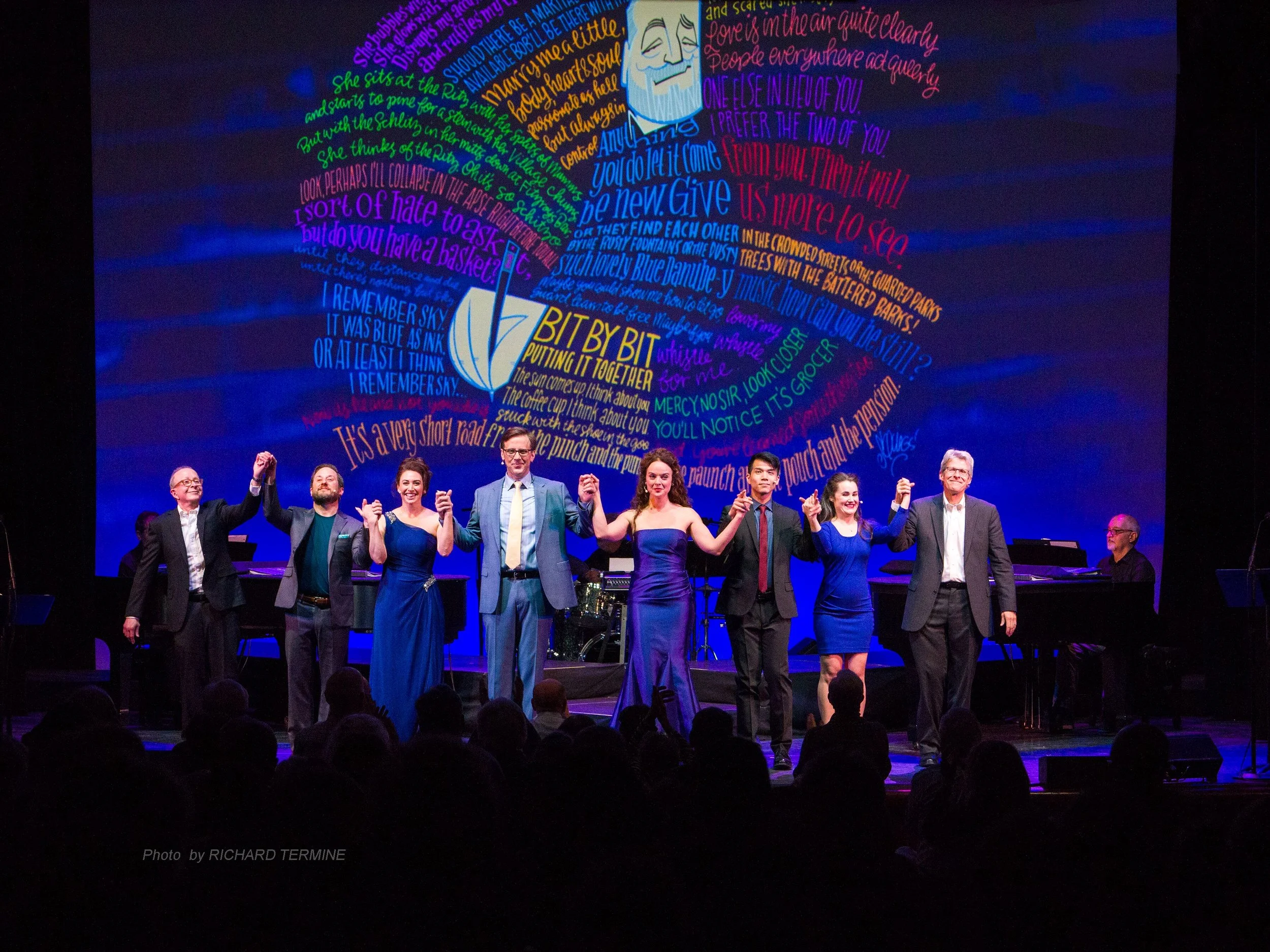REVIEW: Ivo van Hove Pries into Janacek's Diaries
Above: Marie Hamard and Andrew Dickinson. Photo by Richard Termine.
APRIL 6, 2019
BY BRIAN TAYLOR
Ivo van Hove is one of the "it" directors in theater and opera around the world, where his avant garde interpretations leave audiences alternately stirred and confounded. His staging of Czech composer Leoš Janáček's Diary of One Who Disappeared, a collaboration with Flemish production company Musiektheater Transparent, is both.
Photo by Richard Termine
The real coup de théâtre here is that any stage director commands such a following that BAM's Howard Gilman Opera House fills to the rafters for what is, on one hand, merely a skillful performance of an obscure early twentieth century art song cycle accompanied by a contemporary sculpture installation (by set and lighting designer Jan Versweyveld) ready for the MET Breuer. You know, the kind where the artwork is a "room" filled with furniture and tchotchkes, like a forensic diorama? But, Mr. van Hove, dramaturg Krystian Lada, and composer Annelies Van Parys, have also set themselves the task of "finishing" Janáček's piece, fashioning it with a framework and fleshing it out with new material.
It so happens that life imitates art. The unhappily married Janáček was tortuously infatuated with a much younger, married-with-children brunette named Kamila Stösslová; he penned her 700-plus flowery, vomit-inducing letters (she answered politely, on rare occasions), and Mrs. Janáček described her as "not particularly intelligent." The relationship was largely in his head. But she was his muse, inspiring a number of great works, including this song cycle. A series of anonymous poems relating the story of a Czech peasant named Janíček who falls in love with a Gypsy girl named Zefka who eventually leaves society to be with her — sort of Romeo and Juliette without the denouement — were published in the Czech newspaper "Lidové noviny," in which the composer saw a metaphor for his yearnings for Stösslová. This is where Mr. van Hove comes in.
Photo by Richard Termine
The original song cycle was itself an innovation on the lovelorn albums of Lieder Schubert and Schumann composed. Janáček added an appearance by the object of the narrator's affection, as well as a trio of back-up singers. There are some stage directions, as well, where the composer indicates when the Gypsy character should enter and exit. The current production — a collection of striking visual metaphors, held together by a new, vague libretto harvesting text from the composer's letters and will, and the (almost imperceptible) addition of new music — folds the story of Janáček and Stösslová into the story of Janíček and Zefka. Stösslová becomes Zefka (soprano Marie Hamard), and the protagonist becomes a photographer depicted by tenor Andrew Dickinson. Janáček (or is he an older version of Janíček, looking back?) is depicted by actor Wim van der Grijn.
Photo by Richard Termine
In Czech, with English supertitles, Ms. Hamard sings with an earthy, robust sensuality. Much of her material has been added by Ms. Van Parys, enhancing Zdenka's perspective where the original work was limited to Janíček’s point of view. Ms. Van Parys contributed music in contrast to the forward thrust of Janáček's sequence of miniatures. His piano writing is infused with the sound of Moravian folk music, exotic modal harmonies, speech-based rhythms, and a coloristic pianism influenced by Debussy and other Western-European contemporaries. The new material is blander, but wisely takes inspiration from traditional Romani poetry. The spoken dialogue added for Mr. van der Grijn is (presumably) from Janáček's writings, as when he reads a message to Stösslová/Zdenka, speaking creepily of his wish for her to mother his child, and that he is leaving her the rights to his music.
Mr. Dickinson brings poise and conviction to the role of the obsessive photographer, testing his limits in the demanding high C's toward the end of the piece. Three off-stage female voices, one of Janáček's more striking effects, are flawlessly sung by Raphaële Green, Annielies Van Gramberen, and Naomi Beeldens. Unsung star of this production, pianist Lada Valešová assails the difficult score with expressive insight and panache.
If Mr. van Hove’s expressionistic creation has a message, it’s a blurry one. But imaginatively bringing new relevance to a piece that would otherwise be relegated to the rare recital hall is respectable. Confronting a troubled composer’s intimate utterances with ideas of the “Me Too” era, this is thought-provoking art, as opposed to spoon-fed entertainment.
***.








